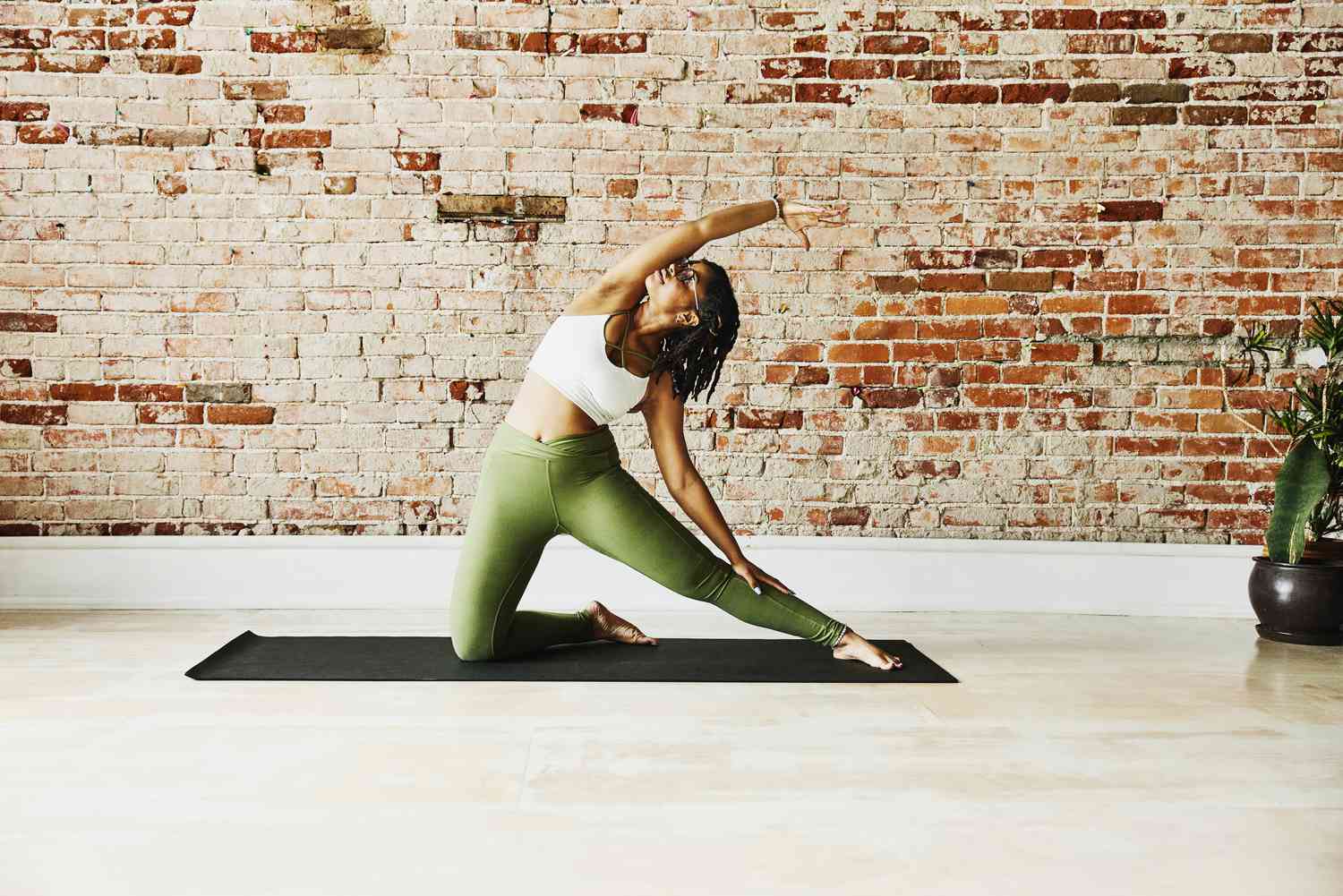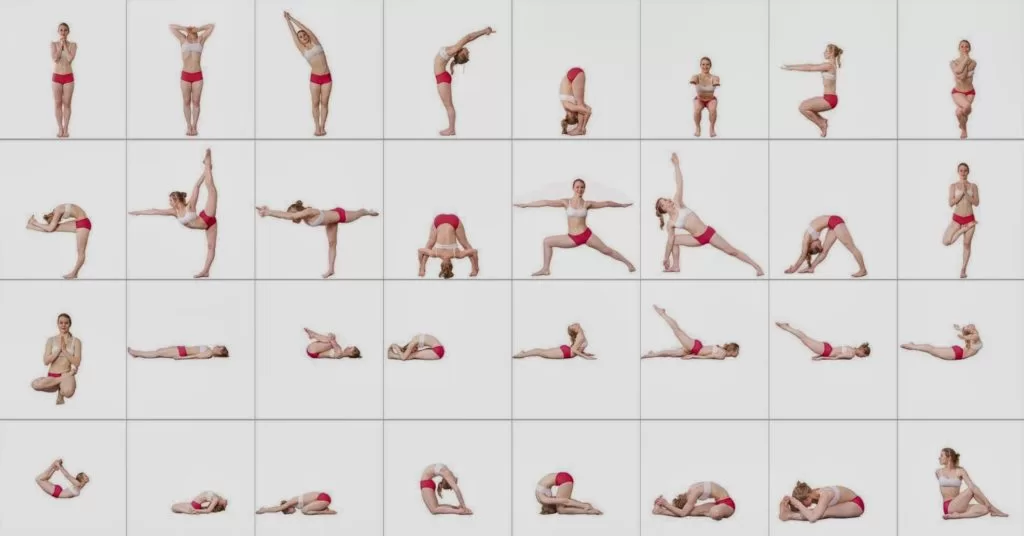
Why Is My New Yoga Mat Slipping?
Are you frustrated with your brand new yoga mat slipping during your practice? A slipping yoga mat can be not only annoying but also dangerous, as it can cause you to lose balance and potentially injure yourself. So why is your new yoga mat slipping?
There could be several reasons, ranging from the quality of the mat to the surface you’re practicing on. In this article, we will explore the common causes of a slipping yoga mat and provide you with practical tips and solutions to help you get the most out of your yoga practice without worrying about slipping and sliding. Whether you’re a seasoned yogi or just starting, this article will provide you with valuable insights to help you improve your practice and achieve your fitness goals.
A brand new yoga mat may slip due to its smooth surface that hasn’t been broken down yet. It can also be caused by sweat or oil on your hands or feet. To prevent slipping, try washing your mat with soap and water, or using a grip-enhancing towel or spray. Additionally, consider a yoga mat with a textured surface or one made from natural rubber.
Why is My New Yoga Mat Slipping?
If you’re a yoga enthusiast, you probably know how important it is to have a good quality yoga mat. A good mat can help you stay stable and grounded during your practice, while a bad one can cause you to slip and slide all over the place. But what happens when you invest in a new yoga mat, only to find that it’s slipping and sliding more than your old one ever did? Here are some reasons why your new yoga mat might be slipping, and what you can do about it.
Reason 1: It’s Not Broken In Yet
Just like a new pair of shoes, your new yoga mat needs to be broken in before it reaches its maximum grip potential. The surface of a new mat is often sealed with a layer of wax or oil, making it slippery until it’s been used and washed a few times. This is why it’s important to give your new mat a chance to break in before you make any final judgments about its grip.
To speed up the breaking-in process, try scrubbing your mat with a gentle soap and water mixture, then rinse it thoroughly and hang it to dry. Doing this a few times before your first yoga session can help remove any surface residue and make your mat more grippy.
Reason 2: You’re Sweating Too Much
Yoga is all about connecting with your breath and moving your body, which inevitably leads to sweating. But when you’re sweating too much, it can create a slippery layer between you and your mat, causing you to slide around.
One solution to this problem is to use a yoga mat towel or a grip-enhancing spray on your mat. A towel can absorb excess sweat and provide extra grip, while a spray can help increase your mat’s stickiness. Just be sure to choose a spray that’s safe for your mat’s material, and to follow the instructions carefully.
Reason 3: Your Mat is Too Thick or Thin
The thickness of your yoga mat can also play a role in its slipperiness. If your mat is too thin, it can wrinkle and bunch up under your feet, causing you to lose balance. If it’s too thick, it can create an unstable surface that makes it difficult to find your footing.
To avoid these issues, choose a mat that’s the right thickness for your needs and preferences. A 4-5mm mat is usually a good option for most yoga styles, but if you have sensitive joints or need more cushioning, you may want to opt for a thicker mat. On the other hand, if you prefer a more grounded practice or need to travel with your mat, a thinner mat may be a better choice.
Reason 4: You’re Not Using the Right Shoes
While some yogis prefer to practice barefoot, others prefer to wear yoga shoes or socks for extra grip. If you’re using shoes that aren’t designed for yoga, they may be adding to your slipping problem.
To avoid this, invest in a pair of yoga shoes or grip socks that are specifically designed for yoga. These can help you maintain a better grip on your mat, especially if you have sweaty feet or are practicing on a slippery surface.
Reason 5: Your Mat is Dirty
Finally, if your yoga mat is dirty or covered in sweat and oils, it can become slippery and lose its grip. This is why it’s important to clean your mat regularly, especially if you practice regularly or sweat a lot.
To clean your mat, mix a few drops of gentle soap with water, then use a soft cloth or sponge to scrub the surface of your mat. Rinse it thoroughly with water and hang it to dry. Avoid using harsh chemicals or abrasive materials, as these can damage your mat’s surface and reduce its grip.
Conclusion
Investing in a good quality yoga mat is one of the best things you can do for your practice, but sometimes even the best mats can become slippery. By understanding the reasons why your new mat might be slipping, you can take steps to improve its grip and get back to enjoying your practice with confidence. Remember to give your mat time to break in, use a towel or spray if needed, choose the right thickness and shoes, and keep your mat clean for optimal grip.
Frequently Asked Questions
Why is My New Yoga Mat Slipping?
If you’ve recently purchased a new yoga mat and have found that it’s slipping during your practice, there are a few reasons why this might be happening. Firstly, it’s possible that the surface of the mat is too smooth, which can make it difficult for the mat to grip onto the floor. Alternatively, it’s possible that the mat hasn’t been ‘broken in’ yet, meaning that the surface is still too slippery and hasn’t had a chance to become tacky.
To help solve these issues, there are a few things you can try. Firstly, try washing your mat with a mild detergent and allowing it to air dry. This can help to remove any slippery residue from the surface of the mat and can also help to ‘break it in’. Additionally, you can try using a yoga towel or a grip-enhancing spray, both of which can help to increase traction between the mat and the floor.
Is My New Yoga Mat Too Thin?
If your new yoga mat feels too thin, it’s possible that it’s simply not providing enough cushioning for your practice. While thinner mats can be more portable and lightweight, they can also be less supportive for certain poses and can cause discomfort in sensitive areas such as the knees and wrists.
To help solve this issue, consider investing in a thicker yoga mat that provides more cushioning. Mats that are around 6mm thick are typically a good choice for most practitioners, as they provide enough support without being too bulky or heavy. Additionally, you can try using a yoga block or bolster to help support your body in certain poses where additional cushioning is needed.
Can I Use a Yoga Mat on Carpet?
While it’s possible to use a yoga mat on carpet, it’s important to note that the mat may not provide as much traction as it would on a hard, smooth surface. This is because the carpet fibers can prevent the mat from gripping onto the floor, which can make it difficult to maintain stability and balance during your practice.
To help solve this issue, consider using a yoga rug or a non-slip mat underneath your yoga mat. These can help to provide a more stable surface for your practice and can help to prevent slipping and sliding on the carpet. Additionally, you can try practicing on a hard surface such as hardwood or tile, which can provide more traction for your mat.
How Often Should I Replace My Yoga Mat?
While the lifespan of a yoga mat can vary depending on the quality of the mat and how often it’s used, it’s generally recommended that you replace your mat every 6-12 months. This is because yoga mats can start to break down over time, which can cause them to lose their grip and support.
To help prolong the life of your mat, it’s important to clean it regularly and store it properly. Avoid leaving your mat in direct sunlight or extreme temperatures, as this can cause it to degrade more quickly. Additionally, consider investing in a high-quality mat that’s designed to withstand regular use.
Can I Wash My Yoga Mat?
Yes, you can wash your yoga mat! In fact, it’s important to clean your mat regularly to help prevent the buildup of sweat, dirt, and bacteria. To wash your mat, simply use a mild detergent and warm water to clean the surface, then rinse thoroughly and allow it to air dry.
It’s important to note that not all yoga mats are machine washable, so be sure to check the care instructions before washing your mat. Additionally, avoid using harsh cleaning products or abrasive materials, as these can damage the surface of the mat and cause it to lose its grip.
Yoga Hacks: How to Finally Stop Slipping on Your Mat
In today’s fast-paced world, yoga has become an essential part of our daily routine. From reducing stress to improving flexibility, yoga has numerous benefits. However, a slippery yoga mat can hinder your yoga practice and make it less enjoyable. Therefore, it is crucial to understand why your new yoga mat is slipping.
One of the reasons for a slippery yoga mat can be the material of the mat. Most yoga mats are made of PVC, which can become slippery when it gets wet. Therefore, it is essential to choose a yoga mat that is made of a non-slip material like rubber or cork. Additionally, you can use a yoga towel or a grip pad to increase traction and prevent slipping during your yoga practice. With a little bit of research and the right equipment, you can enjoy a comfortable and safe yoga practice.
In conclusion, a slippery yoga mat can ruin your yoga practice, but there are several ways to prevent it. Choosing a non-slip material and using a yoga towel or grip pad can significantly improve the grip and prevent slipping. So, take your time, find the perfect yoga mat that suits your needs, and enjoy your yoga practice without any interruptions.

